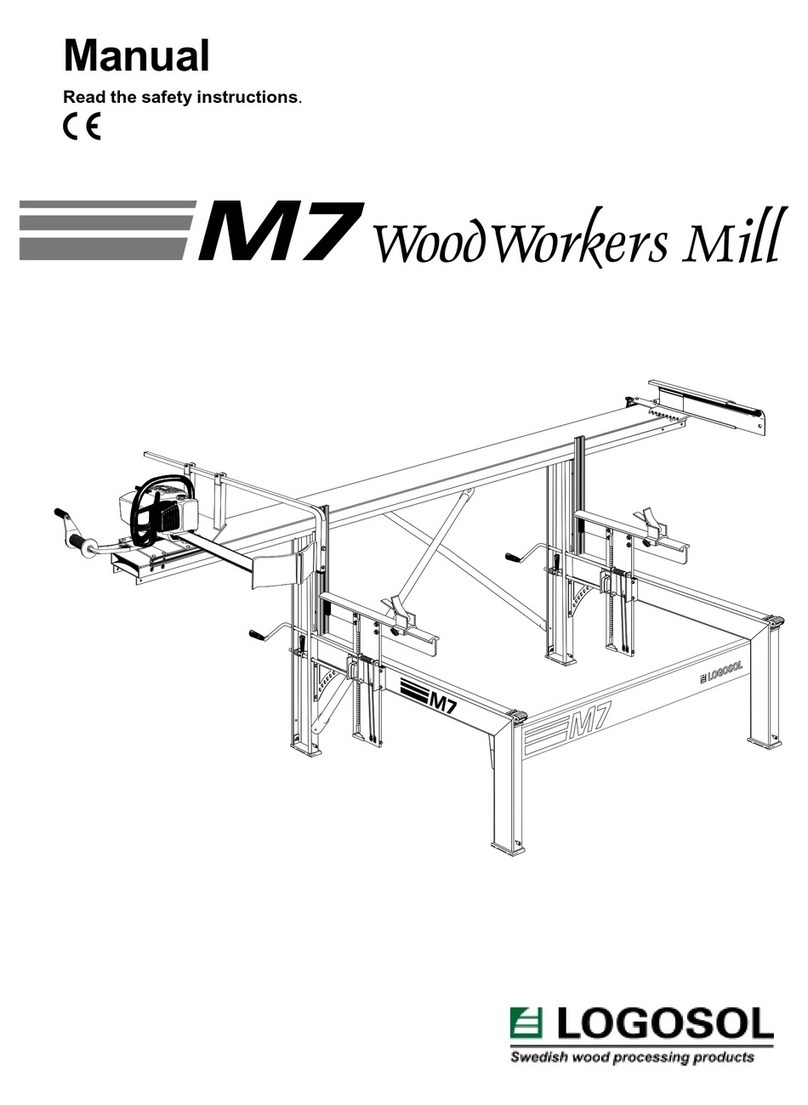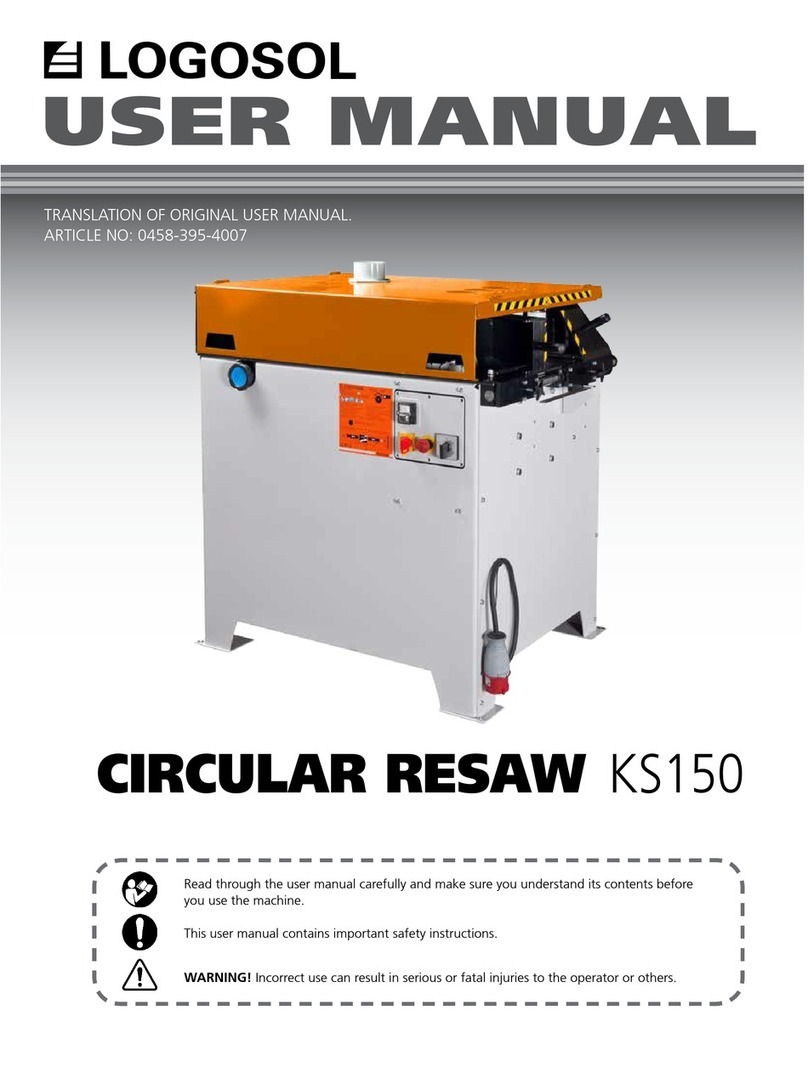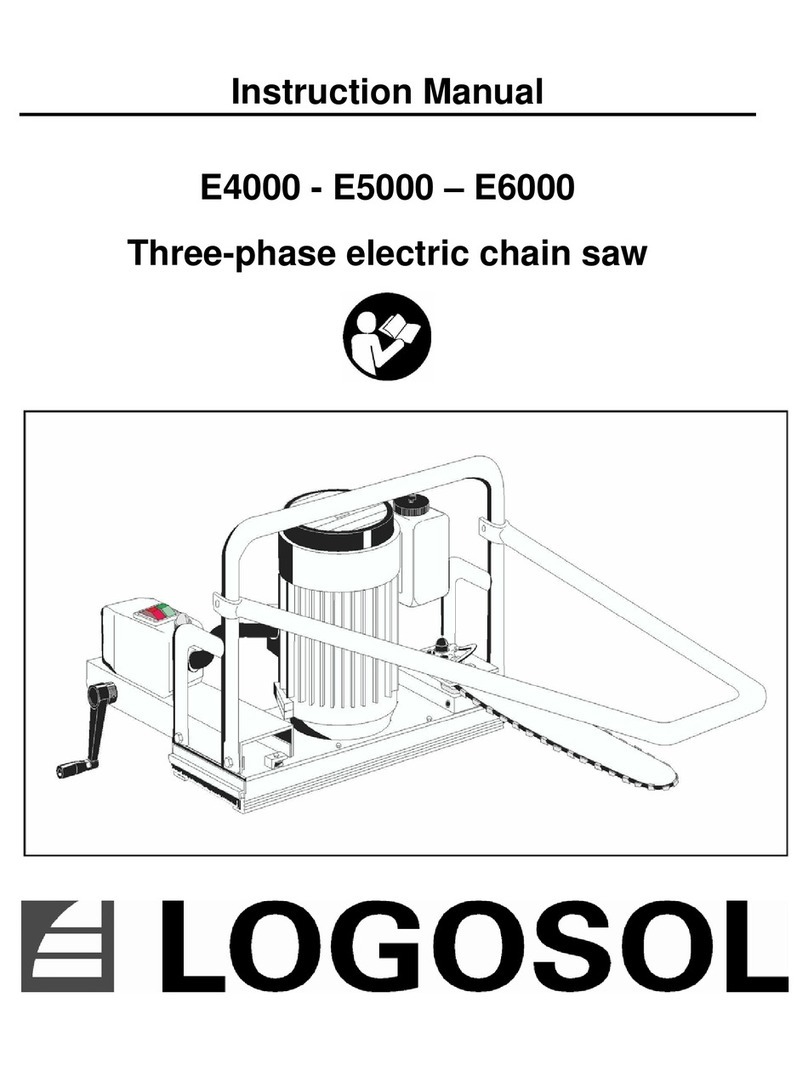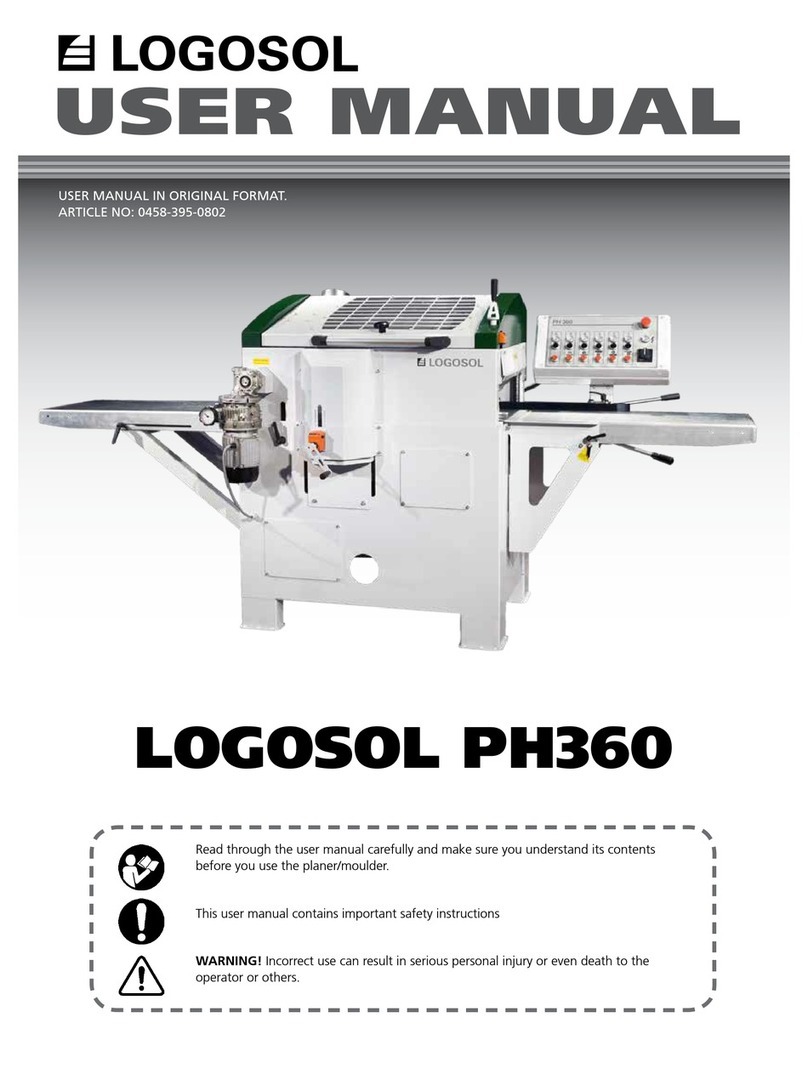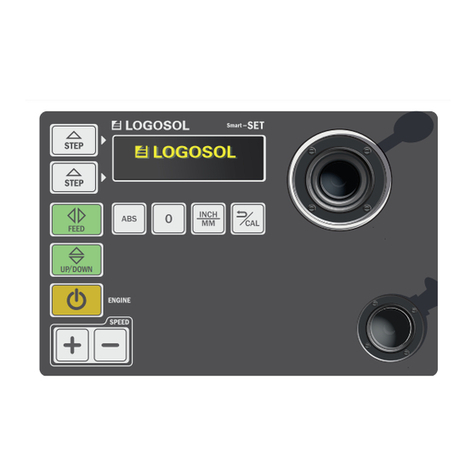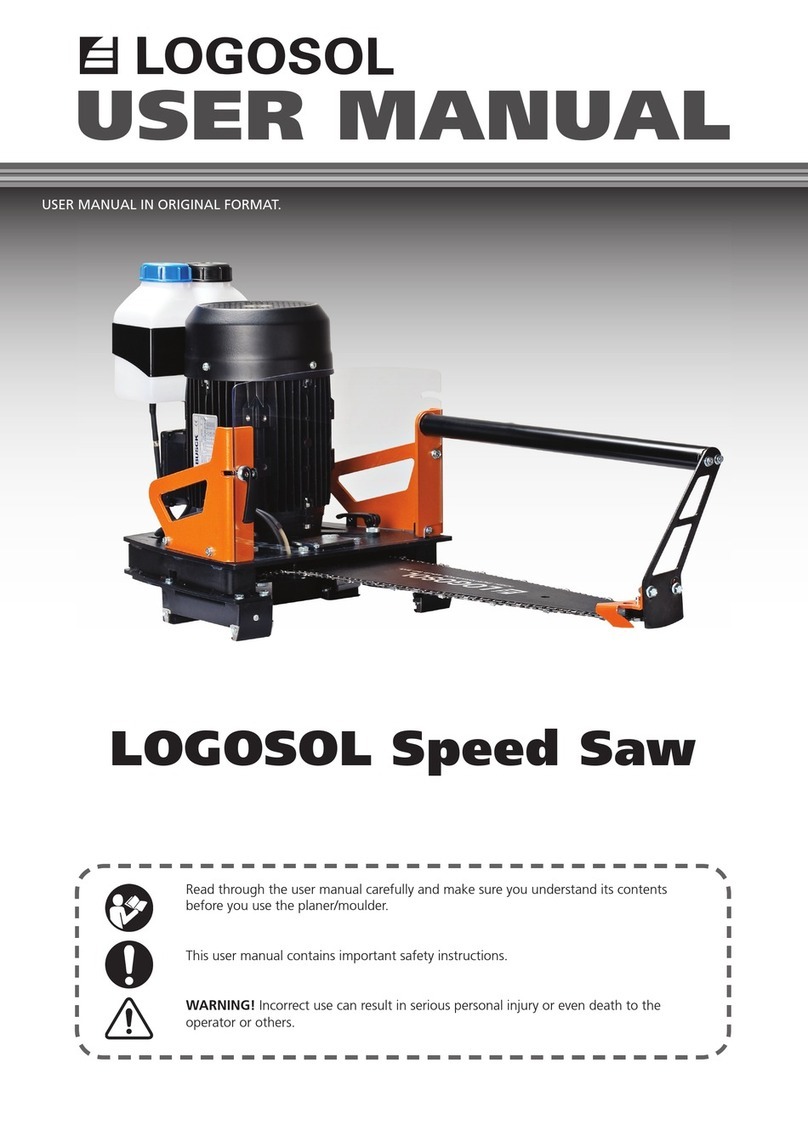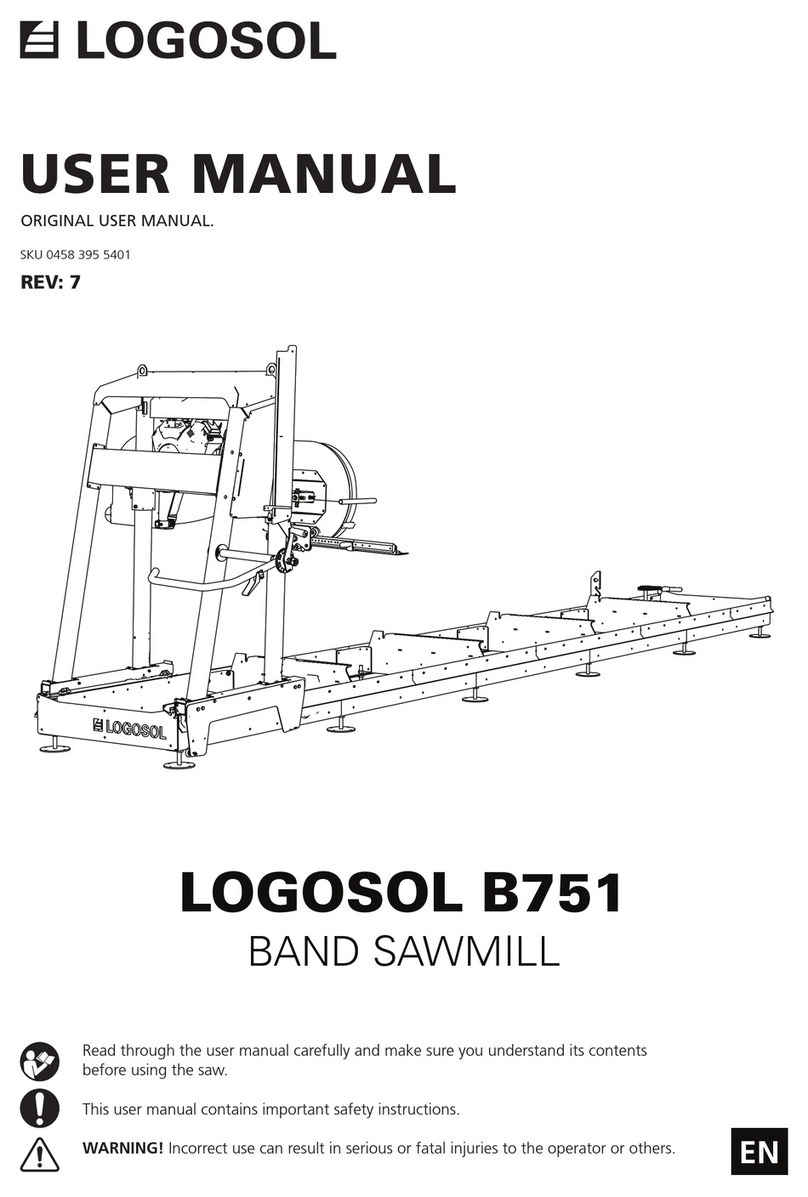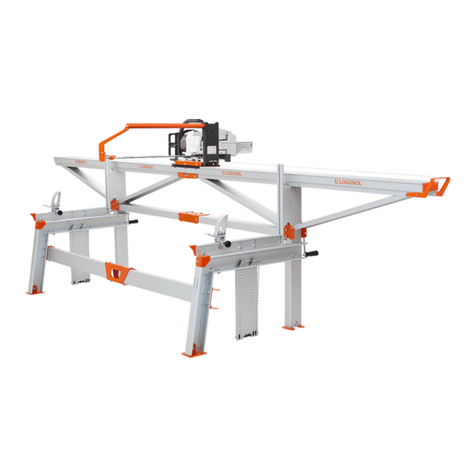
7
List of Components
Pos. Description Ref. no.
1 Crank for machine table, compl. 7502-001-0210
Crank 7502-001-1221
2 Protective plate, in-feed 7502-001-0007
3 Feed roller, grooved (4) 7502-001-0370
Bearing seat, compl. (10)
4 Bearing holder (8)
5 Switch pin 7502-001-0022
Main switch 7502-001-0024
6 Cover 7502-001-0480
Plexiglas 7502-001-0026
Aluminium front piece
hinge
Sealing strip 7502-001-0032
Handle 7502-001-0034
Locking handle, compl. 7502-001-0036
7 Cutter 2
Vertical cutter spindle, right thread 7502-001-0000
Spindle nut, right thread 7502-001-0010
Set of spacers 7502-001-0230
Universal cutter 7000-000-9092
Upper track bearing 7502-001-0052
Lower track bearing 7502-001-0152
Track ring, sga30 7502-001-0048
8 Cover support 7502-001-0056
9 Chip deector, cutter 2 7502-001-0058
10 Carriage, cutter 3 7502-001-0062
11 Cutter 3
Vertical cutter spindle, left thread 7502-001-0020
Spindle nut, left thread 7502-001-0030
Set of spacers 7502-001-0230
Universal cutter 7000-000-9092
Upper track bearing 7502-001-0052
Lower track bearing 7502-001-0152
Track ring, sga30 7502-001-0048
12 Carriage shaft (2) 7502-001-0410
13 Chip outlet, upper section 7502-001-0064
14 Upper horizontal cutter, 410 7502-001-0066
Planing knife, 410 7000-002-8410
Chip breaker, 410 7502-001-0140
Track bearing 7502-001-0152
15 Chip outlet, lower section 7502-001-0068
16 Feed roller, rubber 7502-001-0380
Bearing seat, compl. 7502-001-0075
17 Protective plate, exit 7502-001-0074
18 Bearing bracket 7502-001-0076
19 Trapezoidal thread bar 7502-001-0082
20 Table 7502-001-0084
Plastic runners (4)
21 Carriage locking handle 7502-001-0092
22 Belt gear housing, cutter 2 and 3 7502-001-0096
23 Belt gear, cutter 2 and 3
Poly V belt pulley, motor 7502-001-0300
Poly V belt pulley, spindle 7502-001-0154
Poly V belt 7500-001-2005
24 Electric motor, cutter 2 and 3 7502-001-0350
25 Lower bearing washer (4) 7502-001-0142
Bronze bushing 7502-001-0112
26 Chain sprocket, trapezoidal
thread bar (4) 7502-001-0114
27 Chain, table 7502-001-0116
Chain lock 7502-001-0118
Pos. Description Ref. no.
28 Electric motor, upper horiz. cutter 7502-001-0340
29 Motor support 7502-001-0122
30 Control panel
Control box 7502-001-0124
Control box cover (lid) 7502-001-0126
Emergency stop 7502-001-0128
Control button, ON, black 7502-001-0132
Lamp holder with cap 7502-001-0134
Lamp 7502-001-0138
31 Control box bracket 7502-001-0147
32 Trapezoidal thread bar with crank 7502-001-0144
33 Bearing bracket 7502-001-0146
34 Lower horizontal cutter, 300 7502-001-0500
Planing knife, 300 7000-002-8300
Chip breaker, 300 7502-001-0150
Track bearing 7502-001-0152
35 Chip outlet, lower horizontal cutter 7502-001-0156
36 Motor support bracket
Motor support 7502-001-0158
37 Electric motor, lower horiz. cutter 7502-001-0340
38 Case 7502-001-0162
39 Upper bearing washer (2) 7502-001-0164
40 Upper bearing washer (3) 7502-001-0166
41 Chain tensioner, compl. 7502-001-0168
42 Crank for carriage, cutter 3 7502-001-1220
Threaded bar, carriage, cutter 3 7502-001-0174
43 Chip outlet, cutter 3 7502-001-1172
45 Inner chipoutlet, cutter 3 7502-001-0176
46 Pressure roller 7502-001-0178
47 Cover for belt drive 7502-001-0173
48 Belt pulley, upper horizontal cutter 7502-001-0300
49 Support, carriage opening
50 Worm gear, motor 7502-001-0190
Strut, feeder motor 7502-001-0197
51 Feed chain 4 (model 3 & 4) 7502-001-2391
Feed chain 4 (older models) 7502-001-0391
52 Feed chain sprocket (8) 7502-001-0392
53 Feed chain 3 7502-001-0180
54 Fence 2 7502-001-0100
55 Fence bracket 7502-001-0080
56 Fence axle 7502-001-0196
57 Cover for feed roller chain 7502-001-0198
58 Chip channel, cutter 2 7502-001-1390
59 Chain 2 7502-001-0202
60 Chip deector, cutter 2 7502-001-0204
61 Chain 1 7502-001-0391
62 Fence 1 7502-001-0090
63 Pointer, height adjustment scale 7502-001-0206
Scale 7502-001-0208
64 L bracket 7502-001-0070
65 Flexi hose, cutter 3 7502-001-0240
66 Bracket 7502-001-0212
67 Electric box 7502-001-0214
68 Side roller 7502-001-0228
69 Adjusting plate 1 mm 7502-001-0310
Adjusting plate 1 mm 7502-001-0320
Adjusting plate 2 mm 7502-001-0330
70 Belt gear, lower cutter
Poly V belt pulley, motor 7502-001-0300
Poly V belt pulley, spindle 7502-001-0154
Poly V belt 7500-001-2007
71 Screw for belt tensioning 7502-001-0232
72 Screw for locking the belt tension
